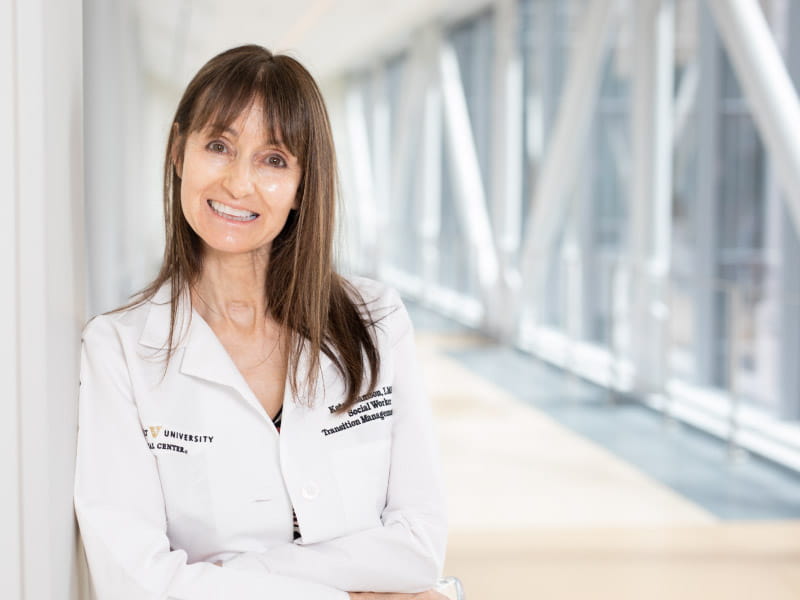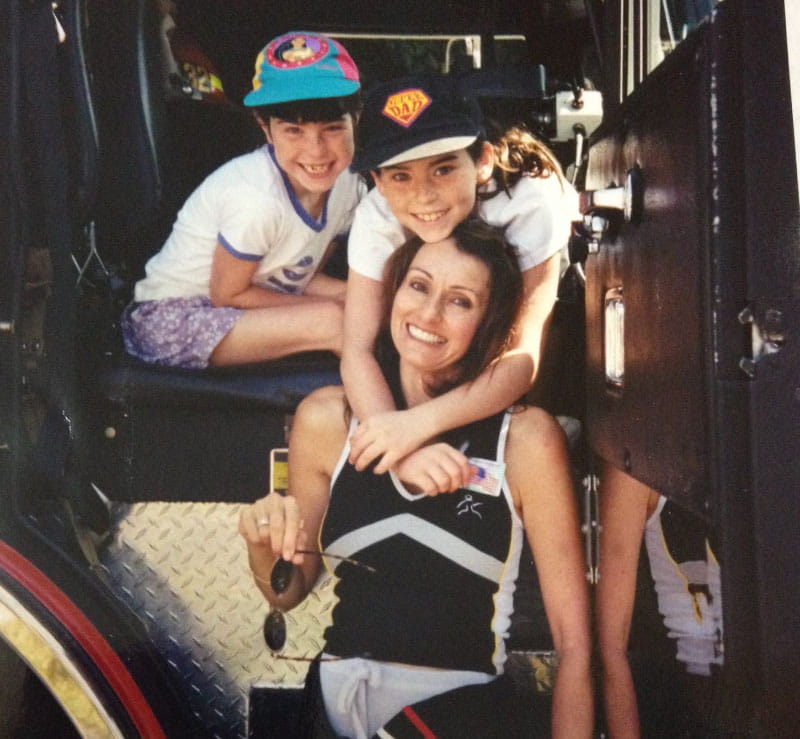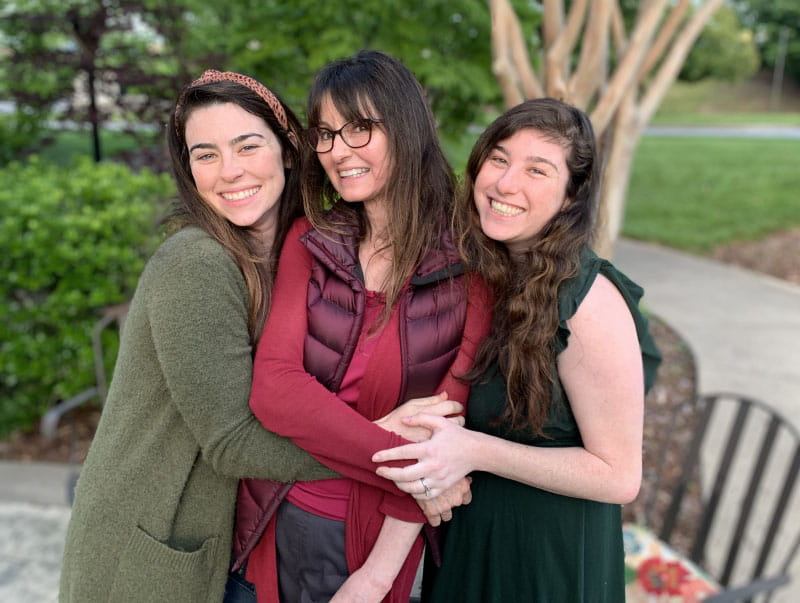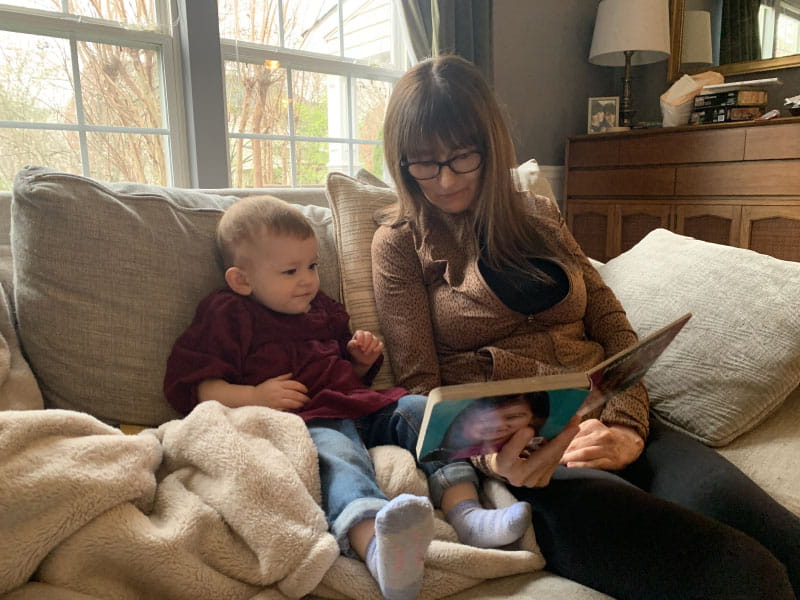A stroke at 33 left her with locked-in syndrome and a grim prognosis. She defied both.
By Diane Daniel, American Heart Association News

Kate Adamson liked exercising so much, her goal was to become a fitness trainer. She grew up in New Zealand playing golf and later, living in California, she worked out often while raising her two young daughters.
Although she was healthy and ate well, she had occasional migraines. At age 33, they were getting worse and more frequent.
One week, she had the worst headache of her life. It went on for days. She wasn't sleeping well and got up early to take a shower.
She felt a wave of dizziness. Her left side seemed to collapse. Adamson made her way down to the edge of the tub to rest.
She was able to return to bed, where she woke up her husband, Steven Klugman.
"I need help now," she said.
Her next memory was seeing paramedics rushing into the house while her 3-year-old daughter, Stephanie, was in the arms of a neighbor. Rachel, her other daughter, then 18 months old, was still asleep.

When she woke up in the hospital, Adamson found herself surrounded by doctors. Klugman was by her side.
She could see them, hear them and understand them. But she could not move or react.
Doctors told Klugman that his wife had experienced a massive brain stem stroke. It was later thought to be related to neck manipulations she had received from a chiropractor for the migraines. The stroke resulted in what's known as locked-in syndrome, a disorder of the nervous system. She was paralyzed except for the muscles that control eye movement.
Adamson realized she could answer yes-or-no questions by blinking her eyes.
Klugman was told that Adamson had a very minimal chance of recovery. She was put on a ventilator to breathe, given nutrition through a feeding tube and had to use a catheter.
She learned to coordinate eye movements to an alphabet chart. This enabled her to make short sentences.
"Am I going to die?" she asked one of her doctors.
"No, we're going to get you into rehab," he said.
Adamson stayed in the ICU on life support for 70 days before being transferred to an acute rehabilitation facility. She could barely move a finger, but that small bit of progress gave her hope.
In rehab, she slowly started to regain use of her right side; her left side remained paralyzed. Therapists taught her to swallow and to speak. She had to relearn to blow her nose, use a toilet and tie her shoes.
She was particularly fond of a social worker named Amy who would incorporate therapy exercises into visits with her children, such as bubble blowing to help her breathing. Amy, who Adamson became friends with, also helped the children adjust to seeing their mother in a wheelchair.
Adamson changed her dream job from fitness trainer to hospital social worker.
She left rehab three and a half months later, still in a wheelchair but able to breathe, eat and use the toilet on her own. She continued outpatient rehab for another year.
She assumed her left side would improve as her right side did. But it remained paralyzed. She would need to use a brace on her left leg to walk and couldn't use her left arm and hand. Still, two years after the stroke, which happened in 1995, Adamson was able to drive with a few equipment modifications.
After her recovery, she spent many years doing advocacy work while raising Rachel and Stephanie. She founded a stroke caregiver support group, volunteered with the American Heart Association and lobbied for stroke research funding. She became a motivational speaker and wrote a book about her journey from locked-in syndrome to recovery.
She also traveled, including visiting family in New Zealand. In 2010, she even went tandem paragliding with an instructor.
In 2018, Adamson reached another milestone. She graduated with a master's degree in social work; she'd started college in 2011 at age 49.
"It wasn't easy going to school. I just had to take it a day at a time, a semester at a time," she said. "The stroke has taught me I can walk through anything."

In 2020, Stephanie, who had moved to Nashville, Tennessee, convinced her mother, who was by then divorced, to move east. Her other daughter, Rachel, was already living there.
Last year, Adamson fulfilled her goal of working as a licensed social worker at a hospital. Now 60, she works with renal transplant and pulmonary patients, helping coordinate their services and care with the rest of the medical team at Vanderbilt University Medical Center.
"Knowing that you're making a difference in somebody's life is very satisfying. It takes me back to when I was a patient – I'm always looking at how I would want to be treated," she said. "I've really come full circle."
Adamson has adapted to doing things one-handed in a two-handed world, such as cooking and tying her shoes. She also walks with a cane.
To stay in shape, she works with a trainer doing functional exercises and strength training. She has a special glove that pulls her left hand into a fist, allowing her to use a rowing machine and stationary bike.
She also uses her muscles to pick up her two grandchildren, 15 and 16 months old.
"It's really special seeing her be a grandma," said her daughter, Stephanie Gaveck. "When my daughter was first born, she was hesitant to hold her with one arm. But she quickly made modifications and became more confident."

Now that Stephanie is the same age her mother was when she had the stroke, she understands more of what her mom went through.
"I've always been proud of her and I use her as an inspiration," she said. "She's a very, very determined person."
Adamson is especially determined when it comes to helping her patients.
"I work really hard to be an example to them, to show that we are all capable of going through difficult life challenges while still maintaining a positive attitude and making a difference in the world."
Stories From the Heart chronicles the inspiring journeys of heart disease and stroke survivors, caregivers and advocates.





